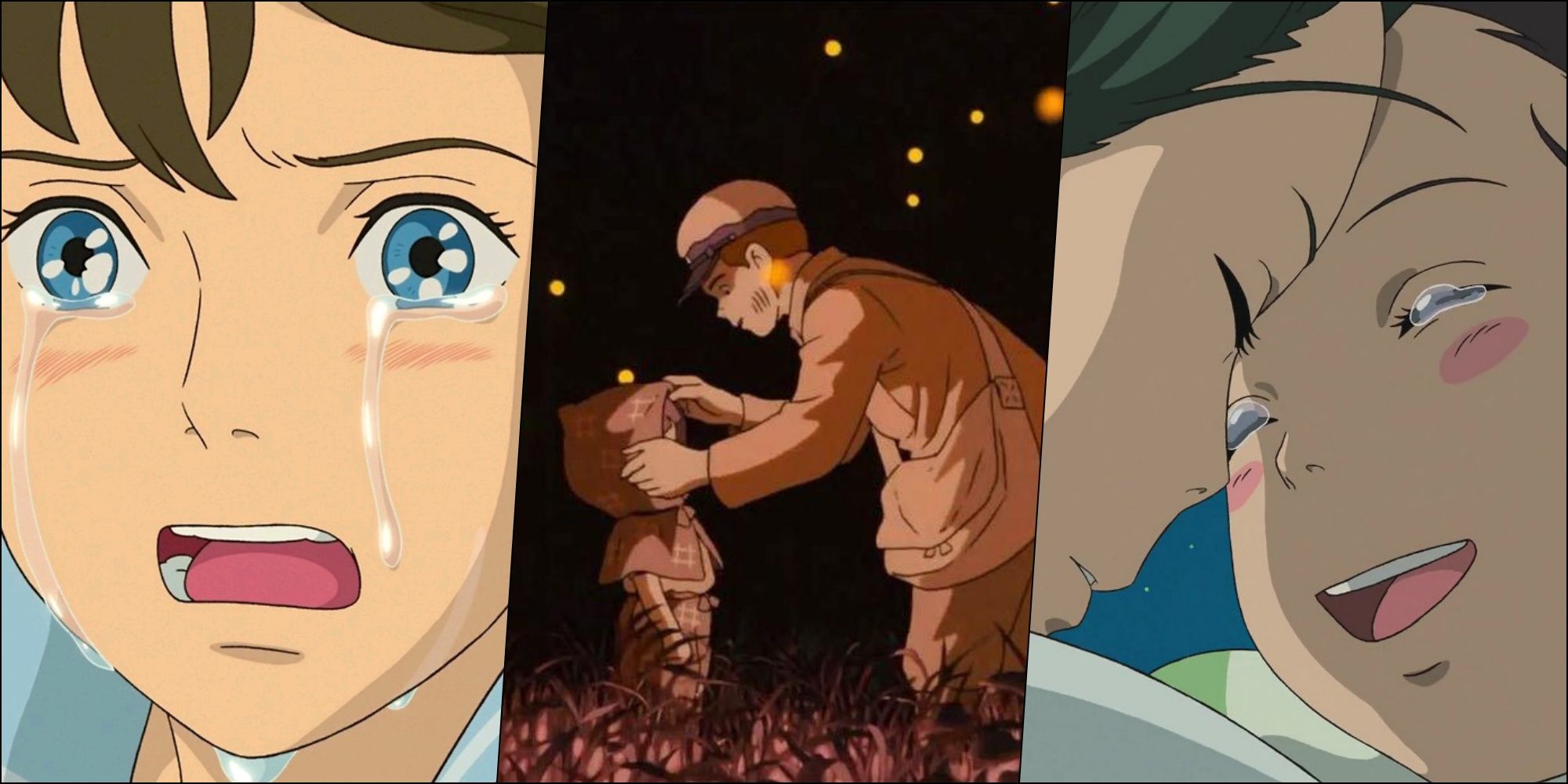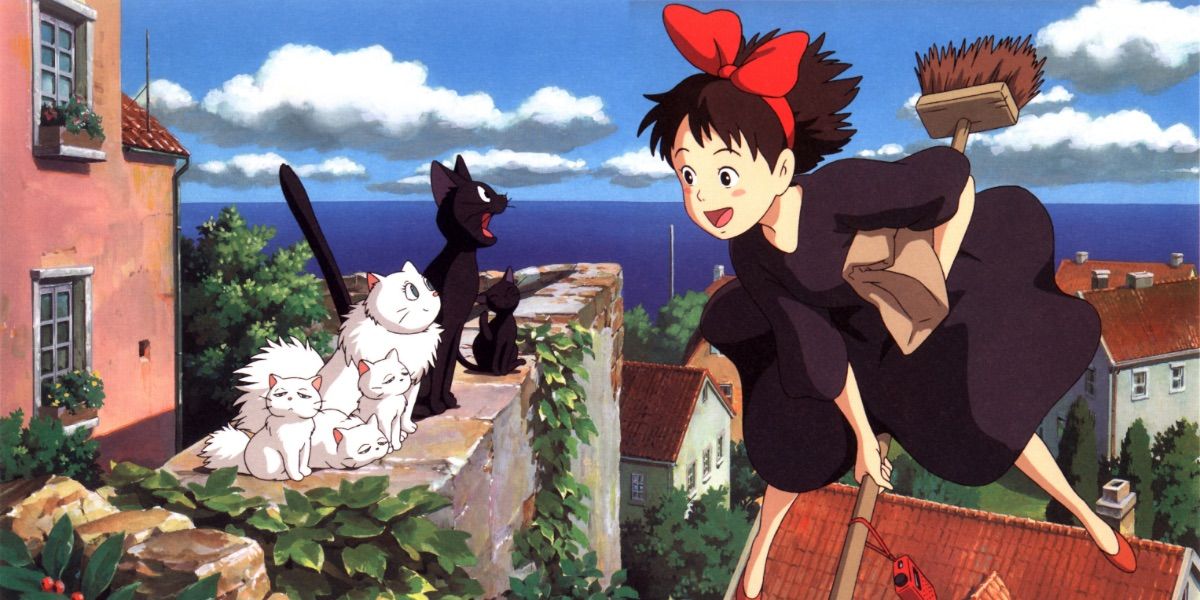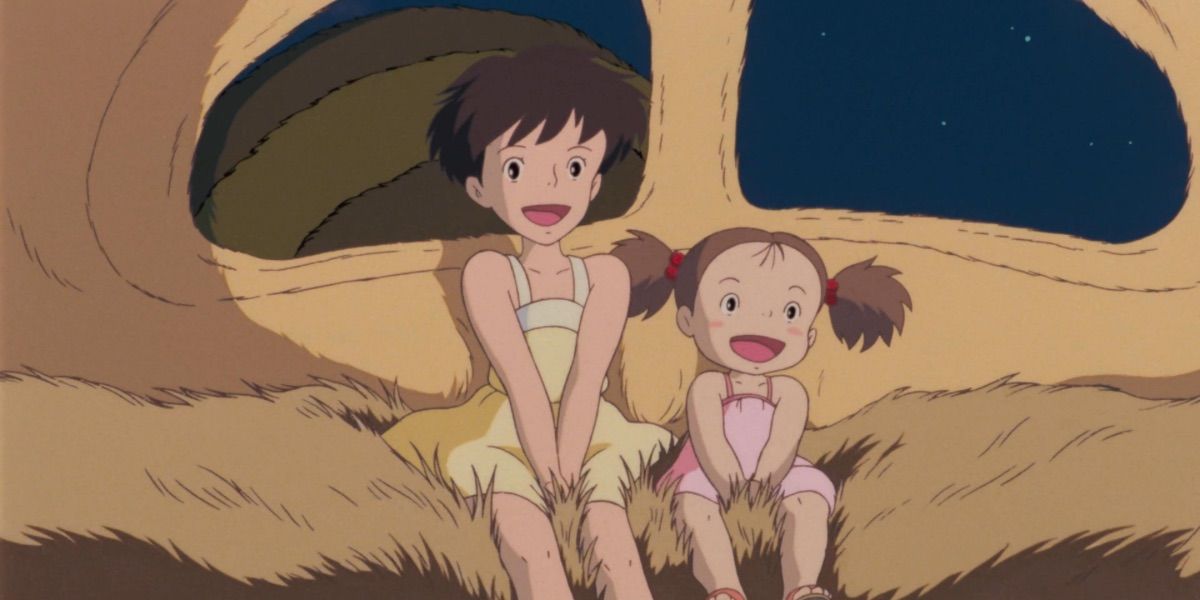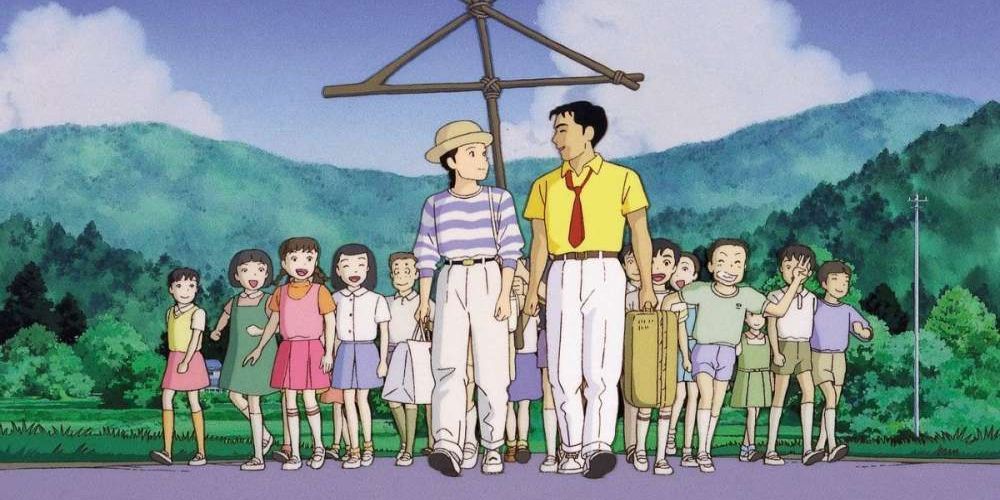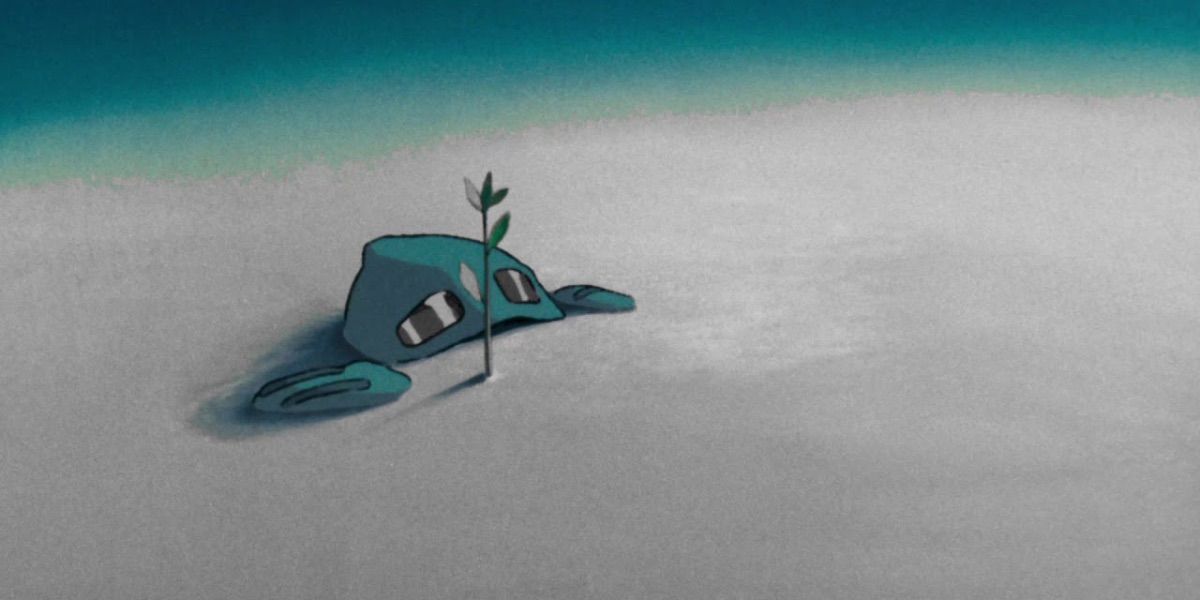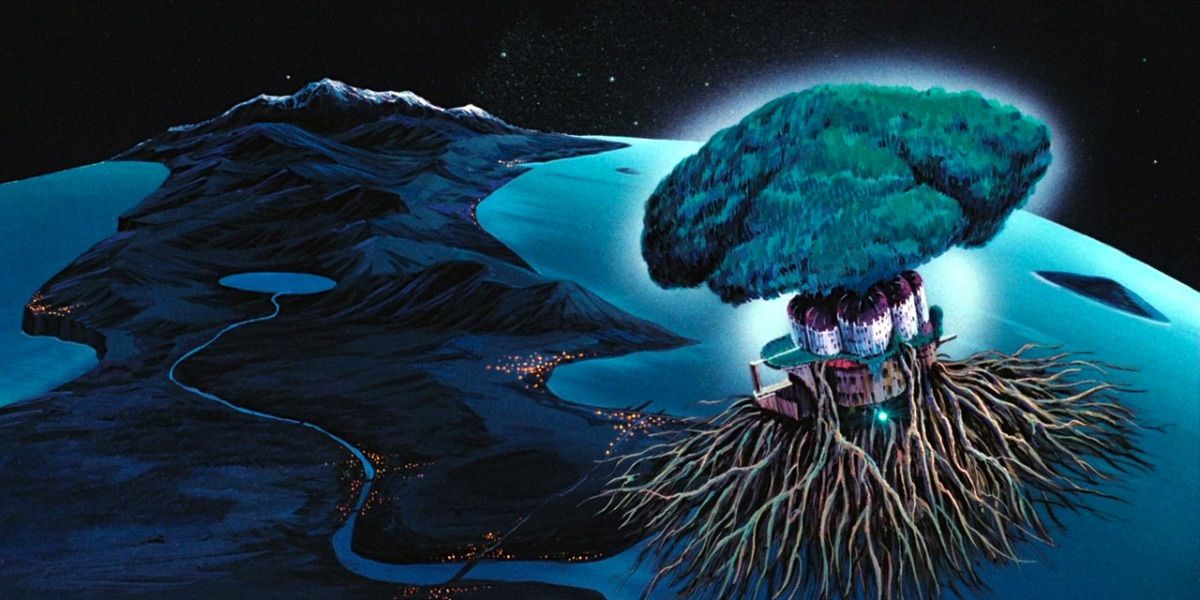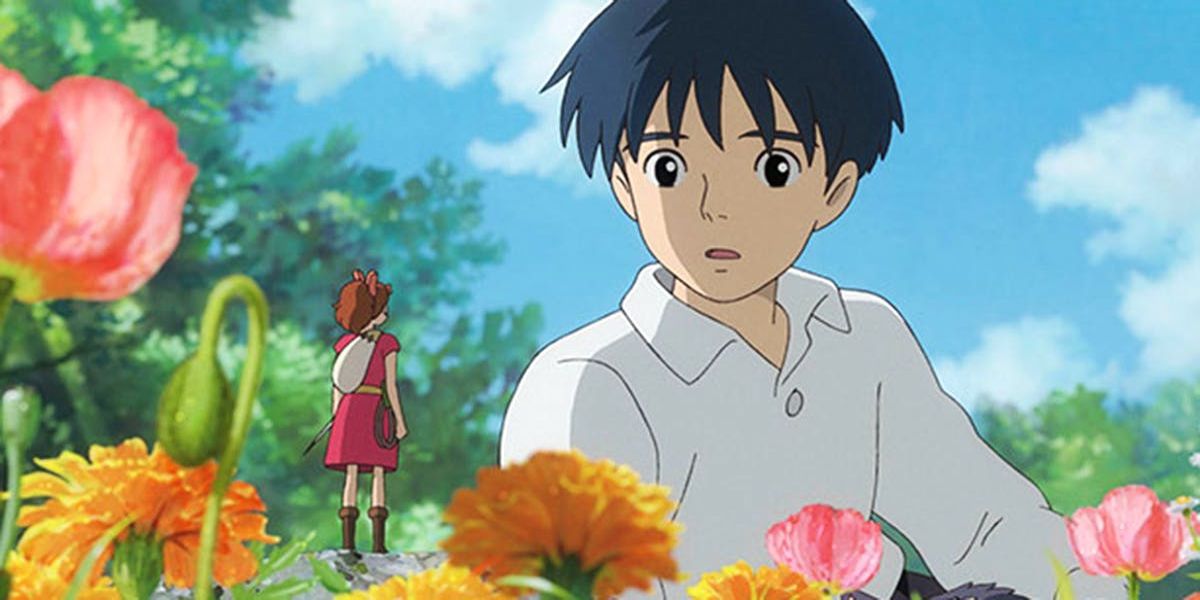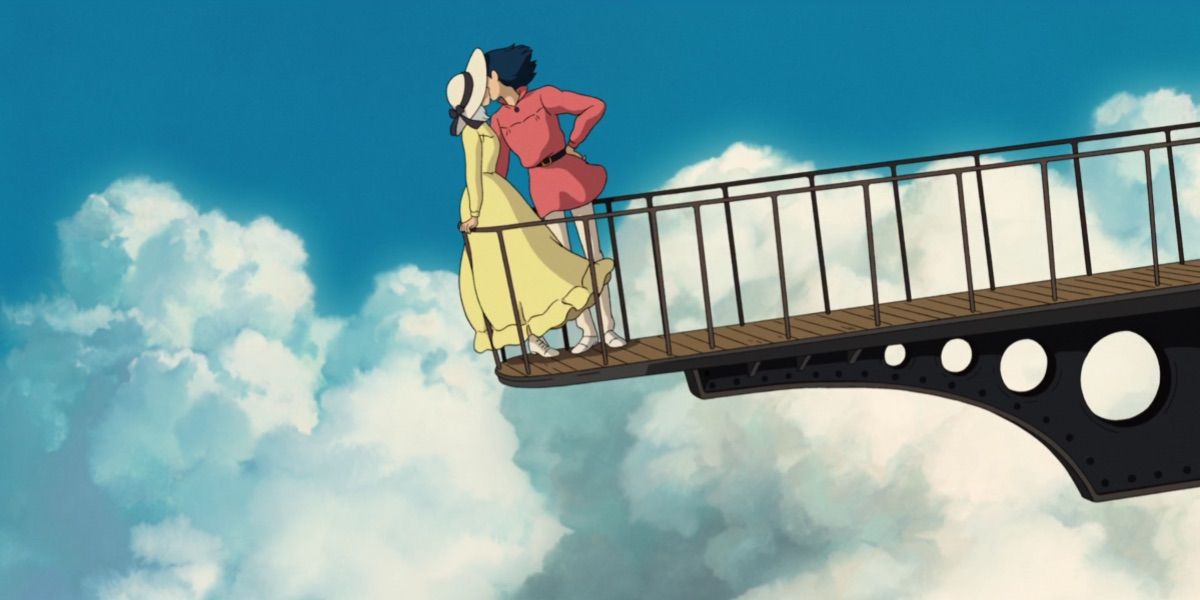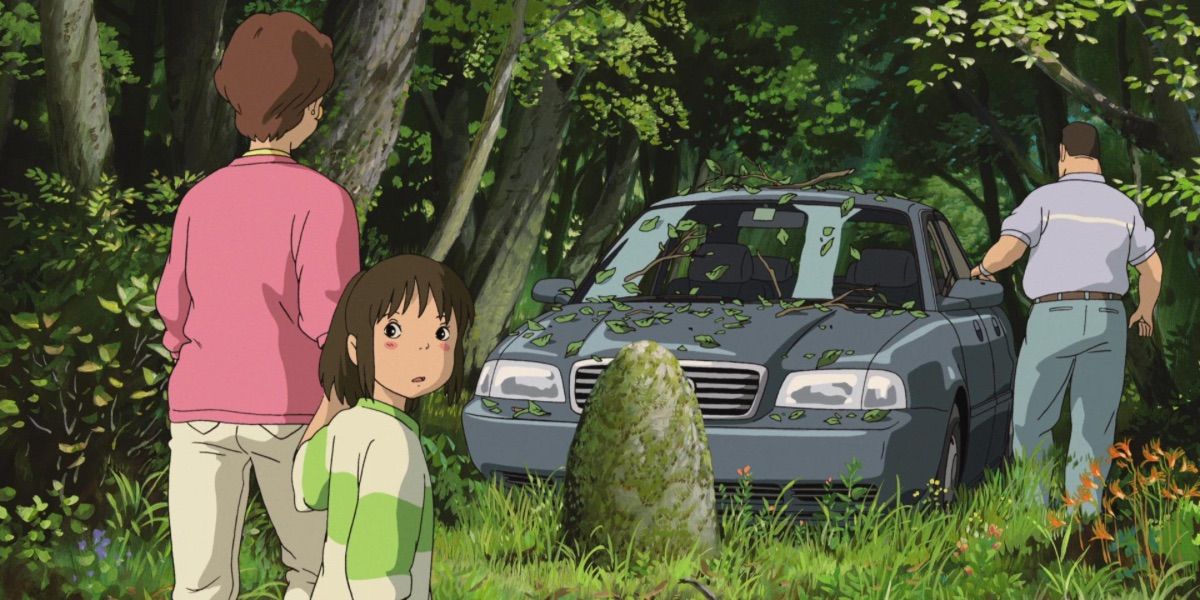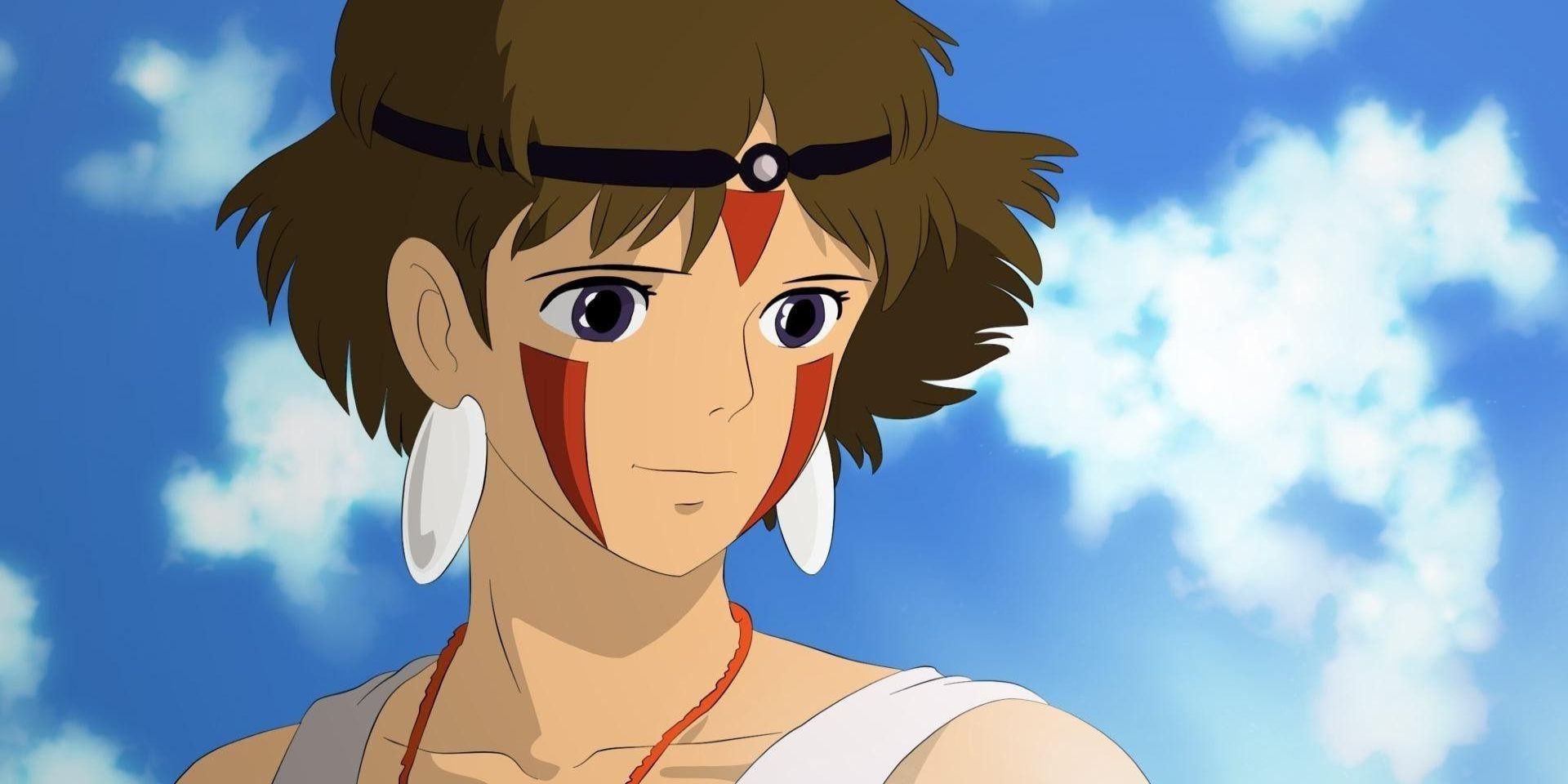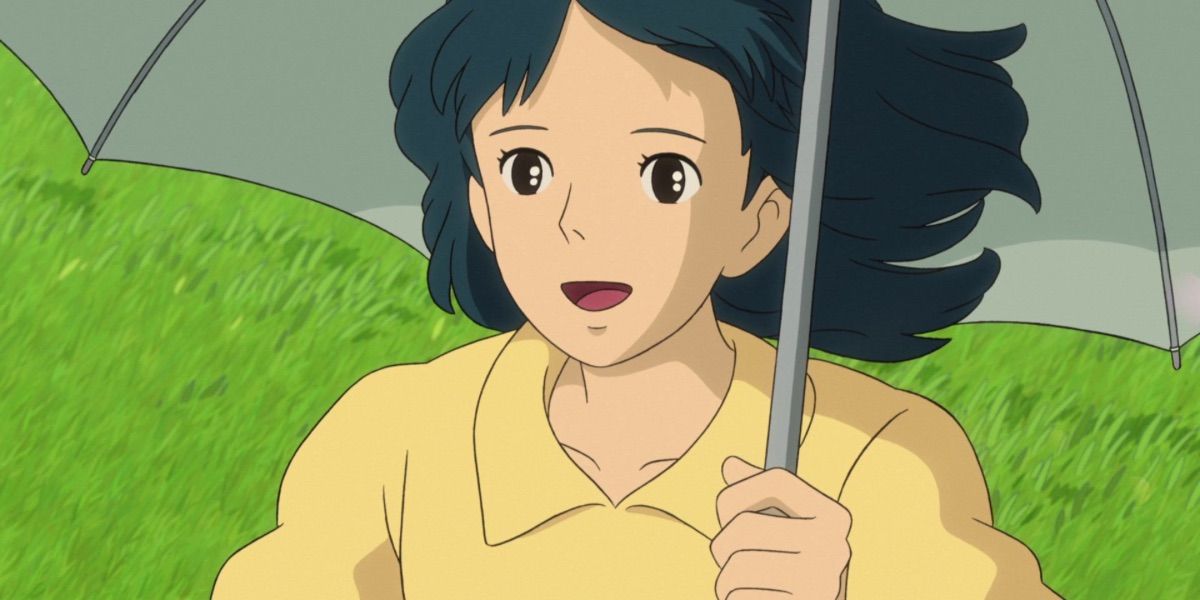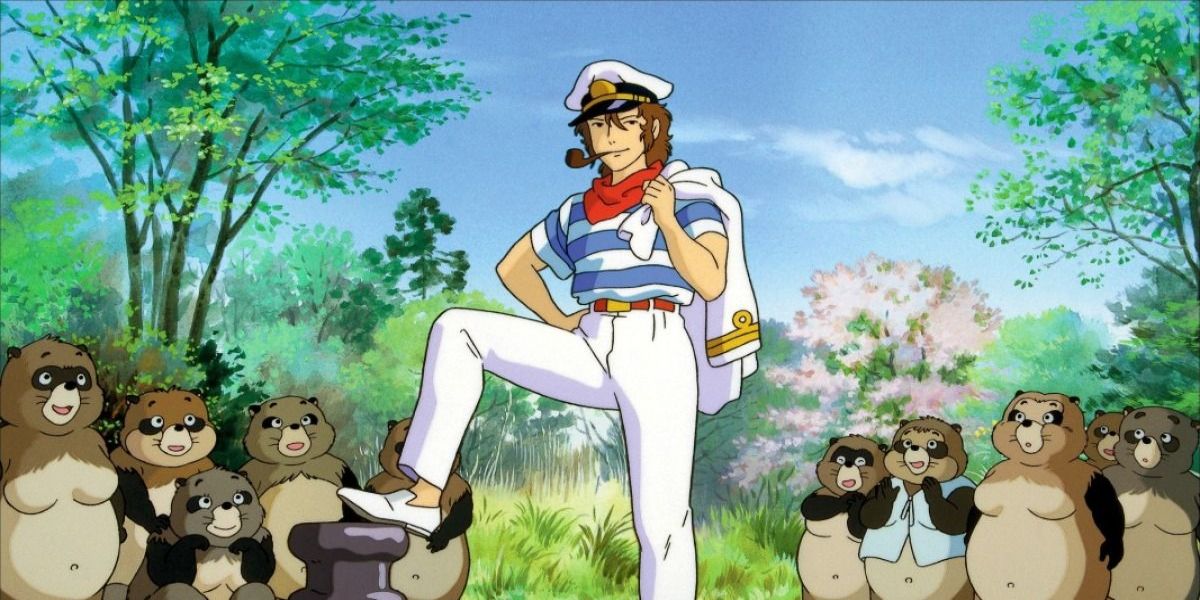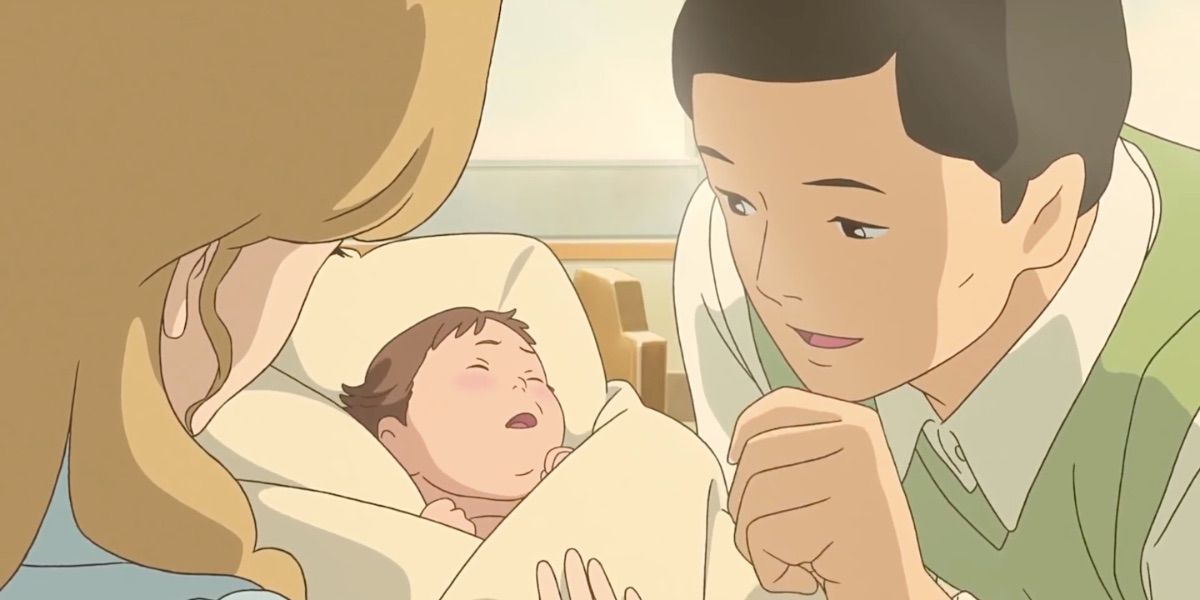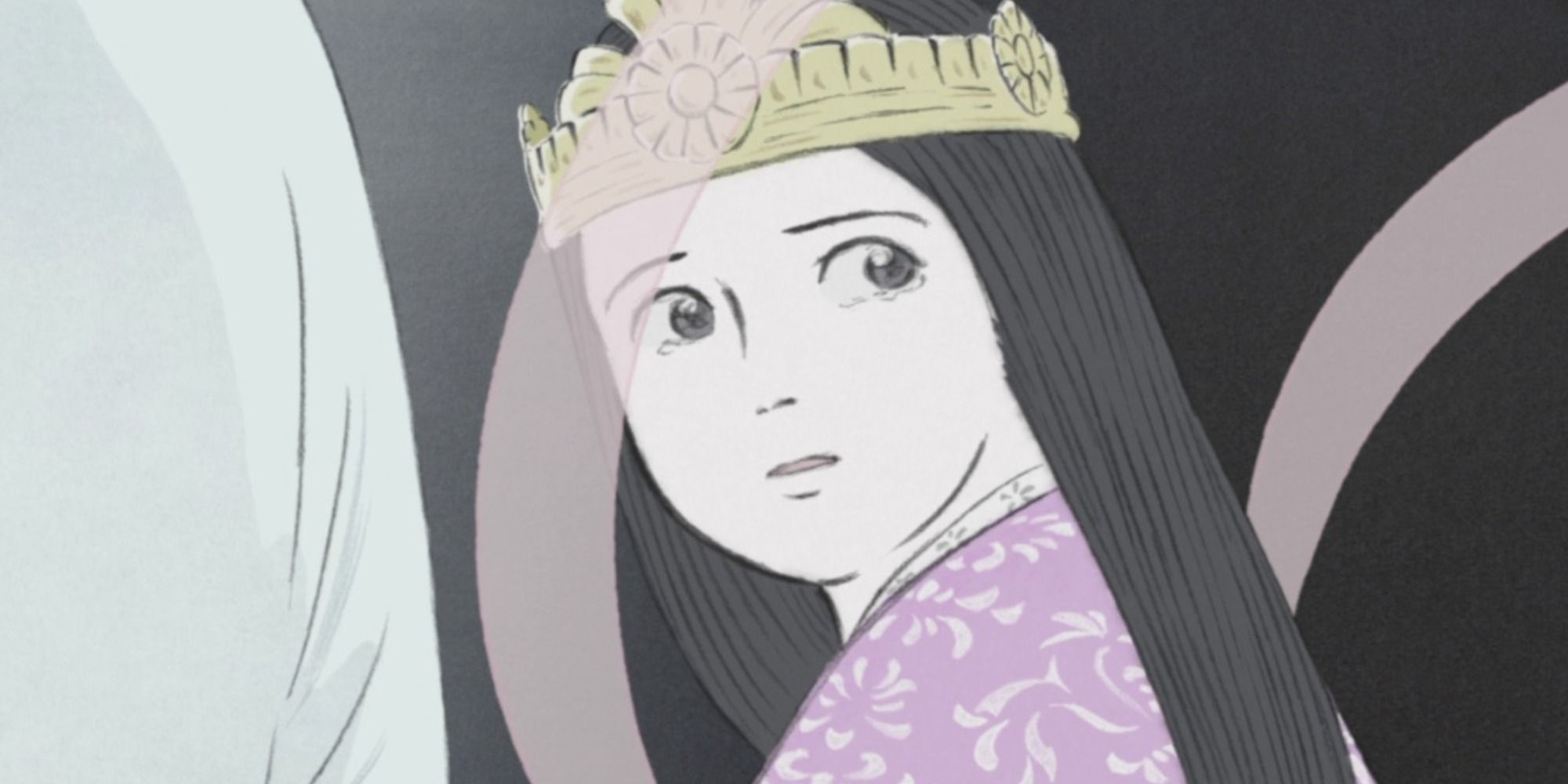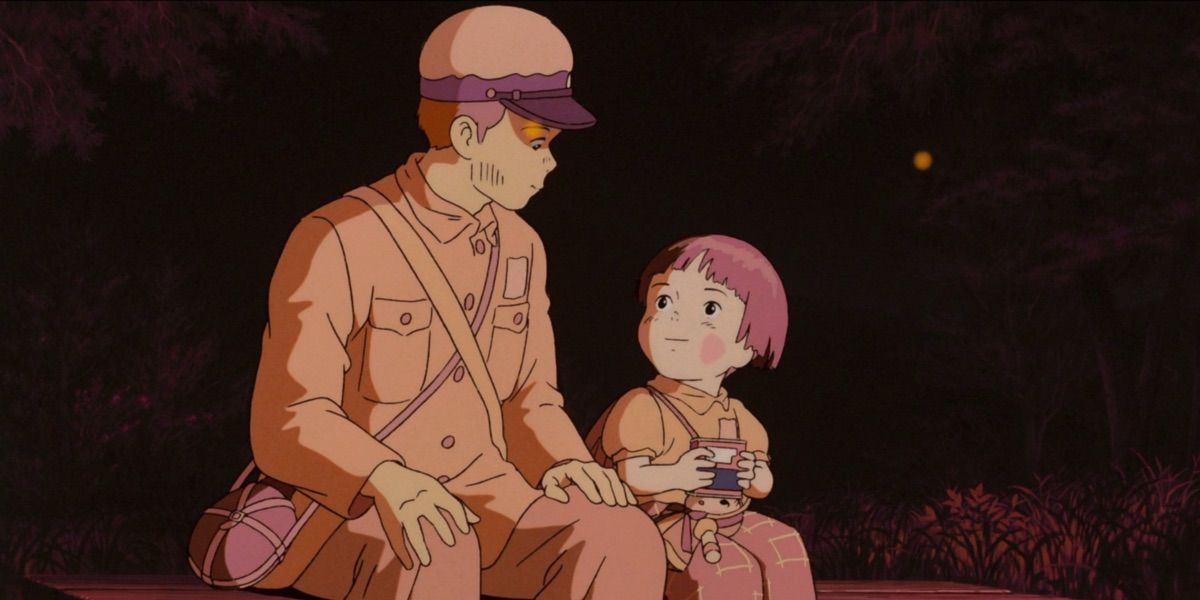While Studio Ghibli films are often more lighthearted and family-oriented, it's a rather common happening that these animated masterpieces tend to strike a deeper, more emotional nerve. Whether it's invoking tears of joy or tears of devastation, Ghibli movies can make it happen.
The movies' stories appeal to a diverse pool of audiences due to their emotional core and ability to enable fantasy while juggling the realities that may face or have had to face in history. Their themes of love, romance, family, and adolescence strike a chord with viewers that can vary from the nostalgia and longing for the simpler days of childhood to the realization of the cruelties life and humanity can offer.
Update on November 18th, 2021 by Tanner Fox: Unfortunately, Studio Ghibli's 2020 effort Earwig and the Witch went down as a rare misfire for the otherwise revered production house. Opting for a 3D-rendered aesthetic and ditching the classic hand-drawn style for which movies like Spirited Away and Howel's Moving Castle are known, the saddest aspect of Ghibli's most recent release is its lack of cinematic magic.
That said, there's still a lot to love about every other Studio Ghibli film produced over the past forty years, and, from the nostalgic Only Yesterday to the surprisingly heartwrenching The Secret World of Arrietty, most are far more emotionally complex than Earwig.
Kiki's Delivery Service (1989)
Being a kid and finding one's place in a busy and bustling world that demands more and more every day can be tough. In Kiki's case, finding inspiration and individuality could become drastically overwhelming as she seeks independence and struggles with her "art" in order to provide a home and identity for herself.
This is relatable for everyone finding their way through the world as Kiki's hardships ring the harsh reality of how difficult it can be for youth to make a statement. At the end of Kiki's Delivery Service, audiences finally see her conquer a period of instability in order to make a name for herself, providing a reminder of hope for the viewers, as well.
My Neighbor Totoro (1988)
A film that delights children for its vicarious display of playful fantasy, My Neighbor Totoro also reminds adults and teens of the magic and innocence of being a small child in a world that is normally so troubling, busy, and wrought with responsibilities. Seeing the siblings be able to explore their new, strange, creeky house set in a gorgeous village surrounded by nature and friendly deities is the sort of imagination that everyone can identify with.
The theme of family is also huge in this film, as, after losing her younger sister Mei in the woods, Totoro helps older sister Satsuki find the little girl. They have a tearful reunion to make sure their hospitalized mother is alright.
Only Yesterday (1991)
Eschewing many of the fantastical tropes for which Studio Ghibli works are known, Only Yesterday tells the very grounded tale of a twenty-something woman struggling to come to grips with an adult life that's very different from the one she envisioned for herself when she was young.
It ends on a high note with the suggestion that the woman was able to reconcile with her past and adopt a lifestyle that better suited her, but it begs introspection on the part of the viewer, who may or may not feel as if they've been able to do the same.
Nausicaä of the Valley of the Wind (1984)
This epic is deeply moving in Nausicaä's pure-hearted meditation in her effort to unite human, animal, and natural forces in order to prevent the resurrection of a dangerous, world-ending God. She loses nearly everything when she's already lost so much. The only surviving child out of 11, she comes to lose her father, her village, and its resources to war and the greed of other competing kingdoms.
She sacrifices everything in order to save the innocent lives of insects and to try and sway the people of the world to compromise with nature rather than conquer it. She ends up losing her life for the cause of pacifism until brought back to life upon catching the attention of the stampeding Ohmu, forcing the kingdoms and their people to realize the futility of their destruction.
Castle in the Sky (1986)
In Sheeta's case, she's already lost all of her family and is left on her own only to be pursued by pirates and a forceful military that intends to exploit the extraordinary and weaponized old-world of Laputa, a mysterious floating relic left behind by an ancient civilization.
When the Colonel, a Laputian descendent like Sheeta, aims to take advantage of Laputa's destructive flying robots in order to enslave the world, Sheeta and Pazu risk everything in order to save the entire world from desolation. Thankfully, they are successful and leave together on a small airship to take on an unknown future following several intense shootouts and nearly being murdered or falling to their deaths.
The Secret World of Arrietty (2010)
The Secret World of Arrietty—known as Arrietty the Borrower or simply Arrietty outside of North America—feels like something Disney may have produced in the '40s or '50s. A group of fairy-like beings known as Borrowers survives by stealing scraps from humans, and it's a very fantastical portrayal of an otherwise grim world.
A Borrower girl named Arrietty and a human boy named Sho become friends, but things are turned upside down when the Borrowers' home is disturbed and it's revealed that Sho must undergo an operation which he isn't likely to survive. Sho remarks that the Borrowers' courage inspired him to fight for his own life, but the movie ends on a tragically ambiguous note.
Howl's Moving Castle (2004)
Howl's Moving Castle has many of its characters start off with something missing or out of reach within themselves. For Sophie, it's self-assurance and self-confidence in her ability to protect others and lead a life of her own. For Howl, it's his inability to defend and isolate himself in the face of war and consequently carrying guilt from having seen and experienced the death and destruction as a result of it.
The protagonists and supporting characters find what they need in themselves by coming together in order to realize the importance of family. In a lovely ending to an epic romance, Howl and Sophie share a kiss on the balcony of their flying castle.
Spirited Away (2001)
The transformation of Chihiro into a braver, more mature person is fascinating to see as she is forced to survive in a world completely alien to her own. The journey is fantastical and daunting as Chihiro comes across intensely frightening forces. Thankfully, she has Haku as a friend and guide.
From there, Chihiro is able to win over many other allies in order to overcome her fears and make it to the end in order to save her parents. In the end, she and Haku prove a unique bond that she, though conflicted, chooses to walk away from as she must return to the human world with her parents. As much as she and the audience have come to form a love for the caring river deity, she continues to live on the rest of her life and consequently forgets her experiences in the spirit world.
Princess Mononoke (1997)
One of the most intense films produced under the Studio Ghibli banner, Princess Mononoke is a fairly intense watch, particularly when compared to tamer offerings like Pom Poko and Only Yesterday.
A film with very blatant themes of environmentalism, the central conflict sees the workers of Iron Town at odds with old gods of the natural world. While the end is admittedly fairly hopeful, there's a lot of bloodshed and brutality in the interim, and Mononoke's message suggests that, while it's not too late for humanity, we may have already left an indelible environmental footprint.
The Wind Rises (2013)
This engaging historical piece chronicles the fictionalized life, love, and career of a real-life plane engineer named Jiro Horikoshi. His early fascination with aircraft follows a fantasy of building beautiful and aerodynamic planes. His fascination turns into a career of brilliant engineering as Jiro is caught up in designing fighter planes.
Ultimately against the war and haunted by his country's involvement, Jiro consistently followed by death and destruction in the face of his creations. What bookends an intellectual yet emotional journey recounting the horrors of war and the exploitation of artists is the loss of Jiro's young, sick wife, making the ending a bittersweet tear-jerker.
Pom Poko (1994)
Pom Poko may have a cutesy veneer, but, as is the case with many Studio Ghibli films, it's far deeper than it seems. Presenting ideas of environmentalism, the loss of innocents, and the eternal struggle between modernism and traditionalism, Pom Poko tells the tale of a clan of tanuki who are threatened by an unstoppable urban sprawl.
The group, unable to save their habitat from the humans, splinter into differing factions and war with each other. In the end, the tanuki are forced to either abandon their homes or morph into humans and give up on their way of life altogether.
When Marnie Was There (2014)
One of the lesser-known Ghibli films follows a shy 12-year-old girl named Anna who lives with her foster parents. After an asthma attack, she's sent to live with her foster parent's relatives. They reside in a beautiful village where Anna comes to see a mysterious girl named Marnie, who appears to be from another time.
What makes When Marnie Was There an especially emotional ending to watch is its twist as it reveals Anna and Marnie's deep connection and the unraveling of their emotional pasts that shows the importance and effects mental health can have on family and relationships. It may take several views for audiences to get over the heavy ending that this profound coming-of-age drama unloads on them.
The Tale of Princess Kaguya (2013)
The late Isao Takahata's last film tells The Tale of Princess Kaguya, a story based on folklore about a young girl as she grows into a young woman tempted by the excitement and enjoyment of life while she's also forced to face the heavy reality of how women are treated in the world she so dearly wanted to visit.
When the Princess, also called "Lil Bamboo" due to her ability to grow quickly, is threatened by a predatory prince and calls out to the spirited world for help, it leaves her helpless, as she is forced to return to the ether, leaving behind the family she's come to love in a melancholic finale.
Grave of the Fireflies (1988)
There isn't a soul that can't admit this is the most soul-crushing film out of all of Ghibli's filmography. Showing the lives of two siblings, a teen named Seita and his baby sister Setsuko, as they try to survive when caught in the crossfire of World War II.
One of the most graphic and depressing animated depictions of Japan during the war next to Barefoot Gen which directly shows the happening and effects of Hiroshima, Grave of the Fireflies is a frank yet sympathetic depiction of how innocent lives become forcefully involved in the horror of war. The ending of this film is by far the saddest and most emotionally taxing out of all the Ghibli films, if not also one of the saddest films ever made.

